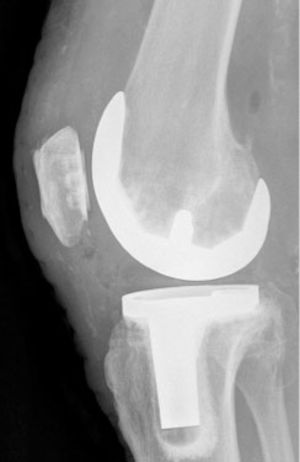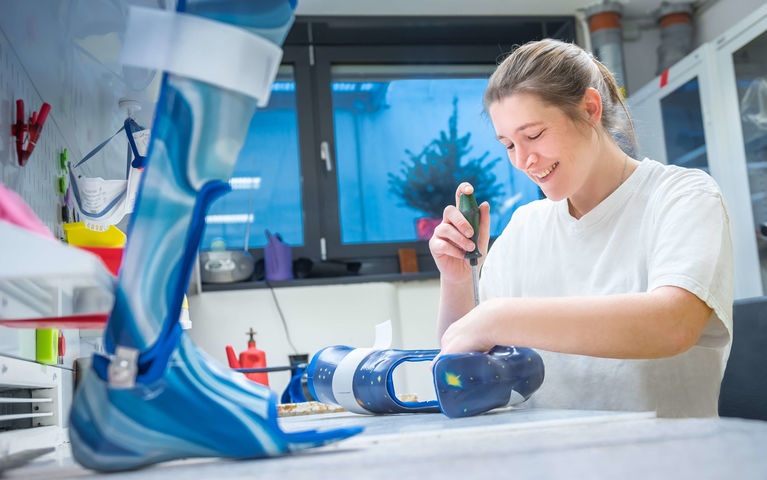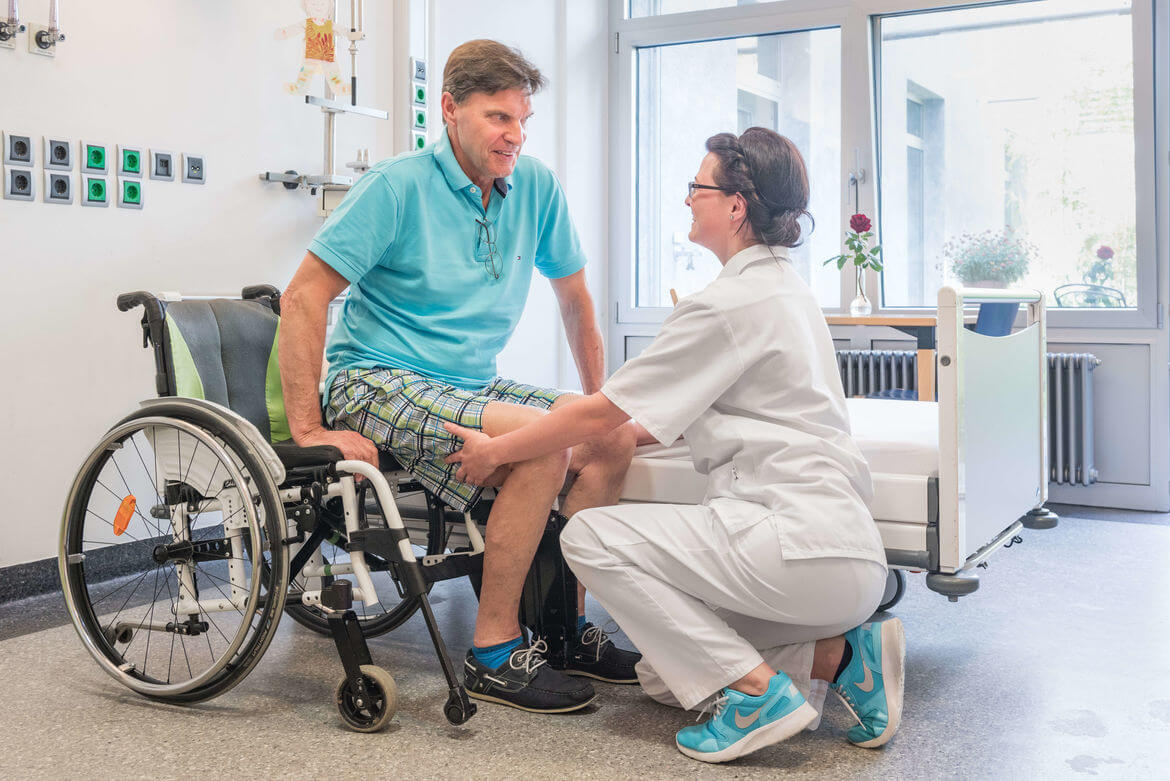The Artificial Knee Joint
Department of Orthopedics at Heidelberg University Hospital
How does knee arthritis occur, and when is surgery recommended?
Wear of the supporting cartilage surfaces (arthritis) is the most frequent cause of knee pain with limited mobility. Knee arthritis can be age-related, but can also occur as a long-term result of knee injury (such as meniscus or cruciate ligament injuries), or from chronic joint inflammation (rheumatism). Non-operative (conservative) therapies such as physical therapy-guided exercise, medications including intraarticular injections, or certain forms of electrotherapy are the first steps taken to induce reduction of symptoms. Only when these measures do not bring the desired effects should one consider a knee endoprosthesis. The correct diagnosis using X-ray and individual limitations of the patient are essential for the decision-making process of whether to implant an artificial knee.

What kind of artificial knee is placed?
This depends on the extent of knee joint wear as well as the condition of the stabilizing ligaments. If only one section of the knee joint is affected by wear, it may be possible to replace only that section with an artificial joint. Often, only the inner portion of the joint is affected, and a “sled” prosthesis can be placed. This procedure is less extensive and promises faster recovery than the implantation of an artificial knee in which all parts of the joint must be replaced. In cases of advanced changes to the knee with involvement of several joint compartments, however, a total prosthesis is necessary to yield the best-possible improvement of symptoms.
How is the operation performed?
The procedure can be performed under spinal or general anesthesia and usually lasts from one to one and a half hours. The knee is opened with a short incision over the inner side of the joint. The worn surfaces of the joint are cut according to a special template so that the appropriately-sized artificial knee can be well adjusted to the bone.Good, systematic pain management ensures sustained pain reduction or relief. Conventional pain medications are used. Narrow pain-relief catheters (femoral catheter) can be inserted into the groin during pre-operative preparation to be used during the critical period (a few hours to days post-surgery). These enable direct, local administration of analgesics.
What risks are associated with such surgery?
Fortunately, complications are very rare for this surgery. The procedure can be prepared for in advance and the risks of complications are thus kept to a minimum Despite all preventive measures, however, just as with any other operation, there are certain risks encountered during knee replacement surgery, arising in fewer than 5% of all cases. In cases of good surgical technique and proper handling of the "new knee” by patients, the results are very good after such procedures.With the knee replacement, you can enjoy life again without pain and with more mobility. However, don’t forget to visit your doctor regularly for follow up over the next few years.
What future considerations should I make if I have an artificial knee joint? (Rules of conduct for operative success)
The following are a few important rules of behavior that contribute to operative success:
- Continuation of the learned physical therapy exercises after discharge from the hospital
- Correct foot rolling
- Cane use with walking until gait stability and normal gait
- Upright gait with equally long strides
- Wearing of laced shoes with soft, elastic soles
Admission and Rehabilitation
How does rehabilitation proceed?
During the initial days after surgery, the major focus of treatment is post-operative pain therapy and physical therapy exercises of the operated knee joint. A pain catheter enables effective pain relief over the first few days. Already one day after surgery you will get out of bed and take your first steps. Your mobility will increase daily until you can independently walk even larger distances within our clinic. Our physical therapists will assist you in this process. In the first few weeks you will be instructed to use crutches to improve your walking safety and so that your operated knee will not be overloaded.
How long does the hospital admission last?
The hospital admission in our clinic lasts approximately 6 to 10 days. During this time, if desired, our social workers will work with you to select a center for post-hospital rehabilitation.
What results can be expected after surgery?
The implants used in our clinic have achieved excellent long-term results for over 15 years, showing good functional outcomes that are largely pain-free in over 90% of cases. Very few patients will need another operation on the affected knee during this time period. Regular control visits with clinical and radiological examinations in our outpatient clinic enable us and you to follow your performance.
Sport with Endoprosthesis
The Deutsche Sportärztebund (German Society for Sports Medicine) has developed the following guidelines regarding sport activities for people with endoprostheses.
Appropriate Sports
- General calisthenics
- Bicycle training / home sports equipment
- Swimming
- Hiking
- Golf
- Walking and light Jogging
- Cross-country skiing
- Riding
- Tennis
Sports less appropriate for the long-term results
- Ball sports
- Track and field
- Alpine skiing



